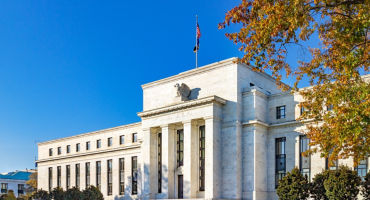Welcome to July’s edition of Bonds in Brief, our monthly assessment of risks and opportunities within bond markets for fixed income investors. Each month, we explore material macro changes and how best to navigate the latest risks and opportunities we see within bond markets.
Key points
- Fixed income markets produced their strongest monthly total returns of the year in July, based on the Bloomberg Global Aggregate Index. Global treasury yields plunged as softer US economic data reinforced expectations that the Federal Reserve (Fed) will soon begin to ease policy. Most spread sectors outperformed government bonds thanks to coupon income and modest spread tightening. The bond market rally picked up steam in early August, benefiting from a flight-to-quality rally following a weak US jobs report.
- Global central banks continue to chart diverging policy paths, creating ample opportunities for active duration management. The Fed kept policy rates unchanged but set the stage for a September cut. The Bank of England cut rates, joining the European Central Bank and Swiss National Bank, who initiated their easing cycles earlier this year. The Bank of Japan (BOJ) hiked rates as it moved further away from its negative rates policy. The ongoing easing cycle should benefit bond yields further, with the unwinding of Japan’s zero interest-rate policy (which could have been a shock to global duration) being offset by the cutting bias of other developed market central banks.
- The substantial policy changes delivered by the BOJ may prompt a further unwinding of the popular yen carry trade. While there remains a very large gap in interest-rate differentials between the US and Japan, the remarkable depreciation of the JPY since the start of the year has now reversed.
What are we watching?
- Heightened tensions in the Middle East. Ismail Haniyeh, the senior Hamas official involved in the ceasefire negotiations for the Gaza conflict, was killed during a visit to Tehran. The location of the attack increases the chance of retaliation, and — combined with the prior killing of Fuad Shukr, the leader of Hezbollah’s military wing — the risk of a broader regional conflict. As of the time of publication, markets await Iran’s response to the attacks. Any broadening of the conflict across the region could have severe market repercussions.
- Is the Fed behind the curve? The question of whether central banks have overtightened has increasingly become top of mind for markets, and nowhere as clearly as the US, whose economic “exceptionalism” has hitherto fuelled the resilience of the US dollar and risk-on sentiment across most global financial markets. A downside surprise to US nonfarm payrolls has since triggered a sudden rally in fixed income as investors saw it as further evidence of a softening labour market. The Fed’s preferred inflation gauge — core personal consumption expenditures (PCE) — still hovered around 2.5% year over year as of June.1 However, likely further upward pressure on inflation in the coming months due to base effects (low comparisons from last year) could be offset by the further weakening of other inflation components. The US is now at the centre of a global debate investors and policymakers are both grappling with, namely whether we are seeing a natural slowdown of the economy or, instead, evidence that high policy rates are starting to cause stress in the labour market. If the latter is true, the Fed may need to consider a faster cutting cycle to avert a hard landing. Data releases in the coming weeks will tell us if recent weakness is noise that we should ignore.
- Rising shipping costs. The cost of shipping freight from East Asia to the West has increased dramatically in the last few months and is now at over half the peak seen in 2022 following the Russian invasion of Ukraine.2 Shipping costs feed through into goods prices, and more so in relatively open economies such as Europe. A reacceleration in core goods inflation could put upward pressure on European core inflation and, along with still rising wages, hamper policymakers’ ability to cut rates.
Where are the opportunities?
- Given how drawn out and uncertain the rate cycle has been, our key conviction remains a focus on higher-quality total return strategies that are less constrained by benchmarks. This could include global sovereign and currency strategies that have the potential to shine during these periods or unconstrained strategies that are able to navigate the late cycle by allocating across different sectors. The combination of a still highly unpredictable US election outcome and the significant uncertainty around economic policy only adds to our conviction in less constrained strategies.
- The tide has turned on rates and with cuts on the horizon, we see core fixed income, and particularly credit, strategies as increasingly attractive from both an income and capital protection perspective. Moreover, with the gradual cooling of inflation and slowing of the economy, higher-quality fixed income is likely to benefit from positive convexity (its price benefiting from lower yields). For European investors looking to protect themselves from ongoing volatility, high-quality income may offer an attractive avenue not just in local but also global markets.
- We think high-yield and emerging markets debt still offer potential, but advocate a cautious approach given how late we are in the cycle and the normalising of default rates relative to current spreads. At the same time, the robust additional income potential may make high yield a good equity substitute. However, for all higher-yielding credit — including high yield, bank loans and convertible debt — we believe an “up-in-quality” issuer bias is warranted in case the slowing economy undershoots a soft-landing scenario, and defaults and downgrades accelerate.





















